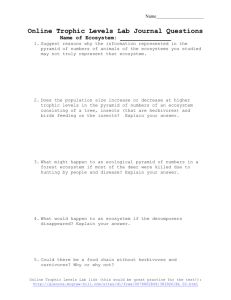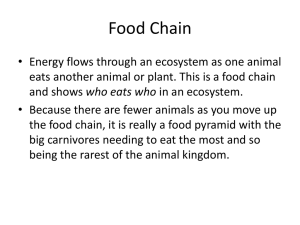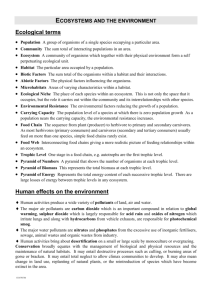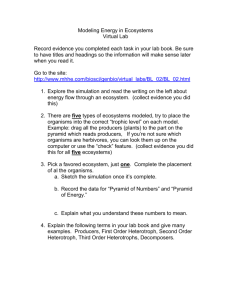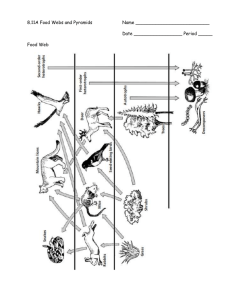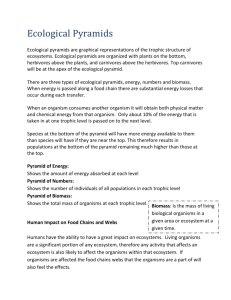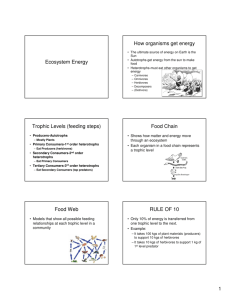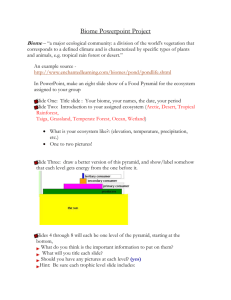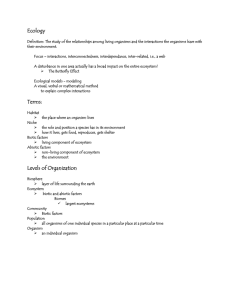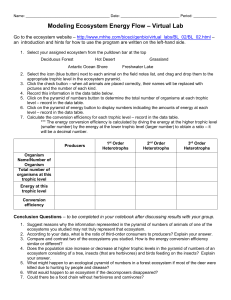Ecosystem Energy Transfer Virtual Lab Worksheet
advertisement
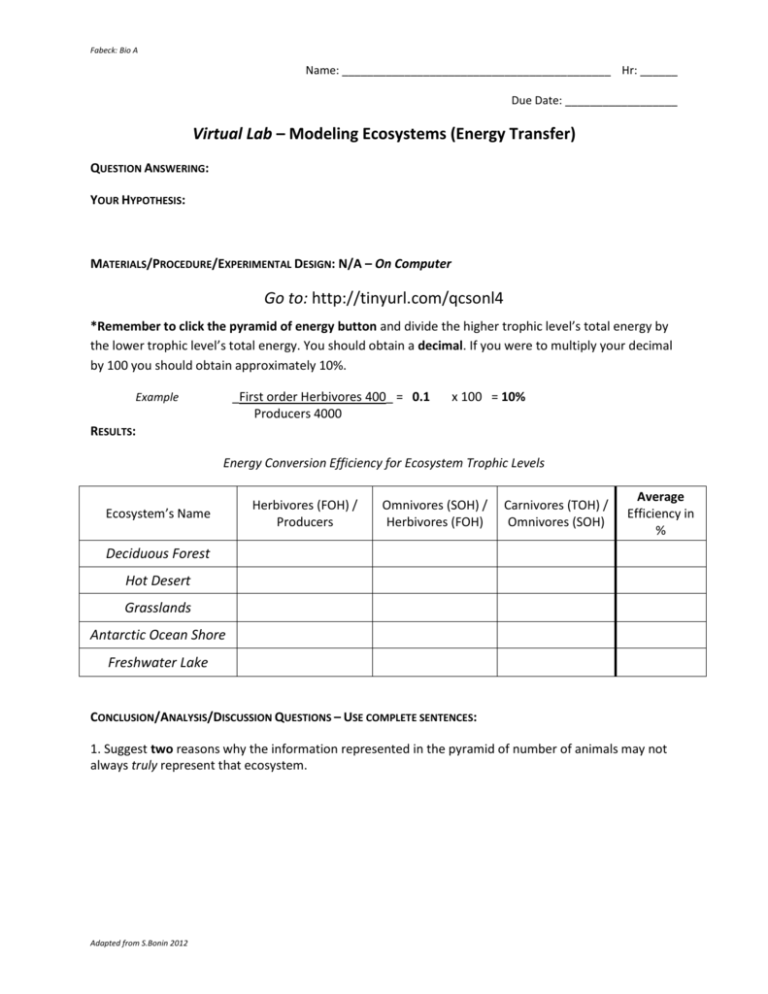
Fabeck: Bio A Name: ___________________________________________ Hr: ______ Due Date: __________________ Virtual Lab – Modeling Ecosystems (Energy Transfer) QUESTION ANSWERING: YOUR HYPOTHESIS: MATERIALS/PROCEDURE/EXPERIMENTAL DESIGN: N/A – On Computer Go to: http://tinyurl.com/qcsonl4 *Remember to click the pyramid of energy button and divide the higher trophic level’s total energy by the lower trophic level’s total energy. You should obtain a decimal. If you were to multiply your decimal by 100 you should obtain approximately 10%. _First order Herbivores 400_ = 0.1 Producers 4000 Example x 100 = 10% RESULTS: Energy Conversion Efficiency for Ecosystem Trophic Levels Ecosystem’s Name Herbivores (FOH) / Producers Omnivores (SOH) / Herbivores (FOH) Carnivores (TOH) / Omnivores (SOH) Average Efficiency in % Deciduous Forest Hot Desert Grasslands Antarctic Ocean Shore Freshwater Lake CONCLUSION/ANALYSIS/DISCUSSION QUESTIONS – USE COMPLETE SENTENCES: 1. Suggest two reasons why the information represented in the pyramid of number of animals may not always truly represent that ecosystem. Adapted from S.Bonin 2012 Fabeck: Bio A 2. Does the size of the organism population increase or decrease as you move up the ecological food pyramid? Explain your answer. 3. What might happen to an ecological pyramid of numbers in a forest ecosystem if the majority of the deer were killed due to hunting by people and death by disease? 4. Why is the ecological food pyramid shaped as a triangle? Give two reasons! 5. Could there be a food chain without herbivores and carnivores? Why/why not? 6. Construct a bar graph comparing average efficiency of each biome. Use the lower portion of this page. Make sure to label and title your graph! Adapted from S.Bonin 2012
